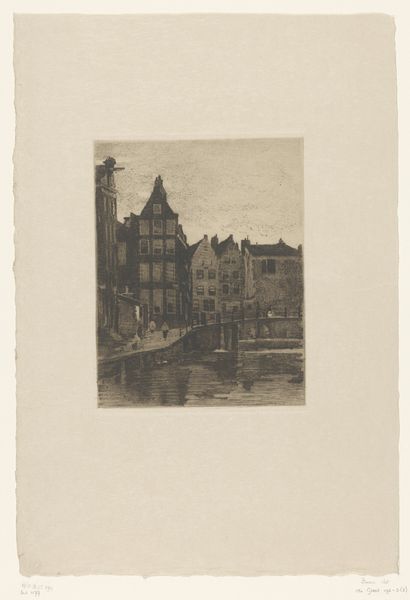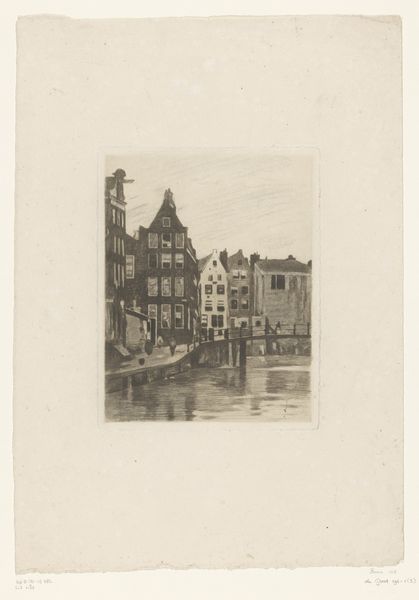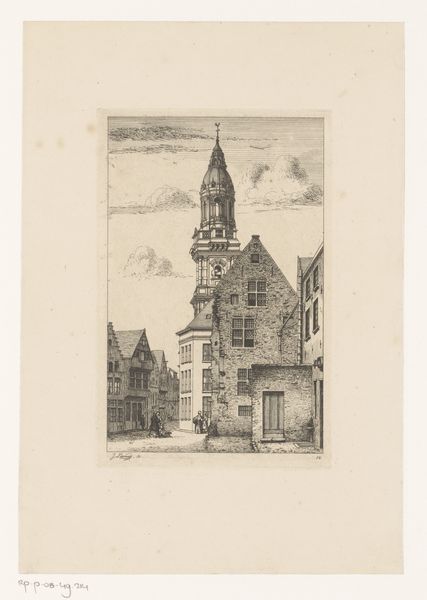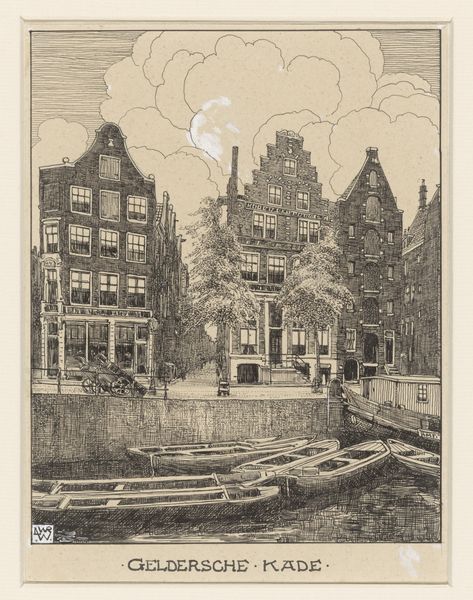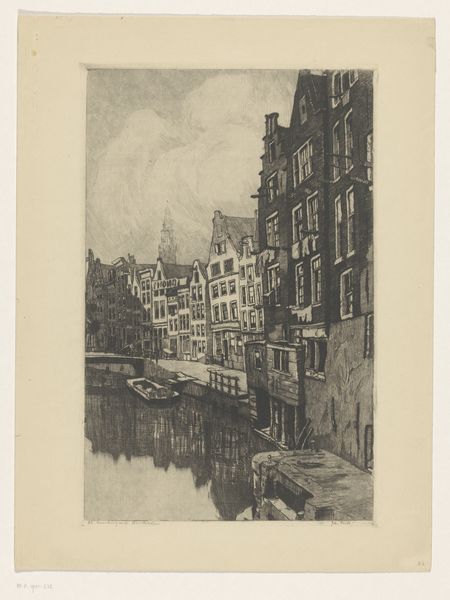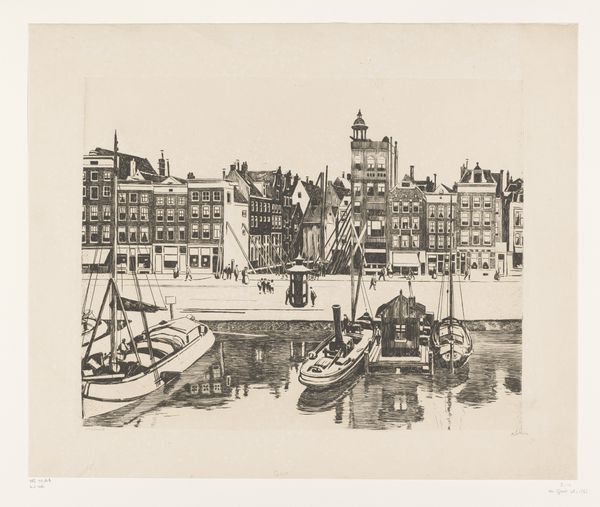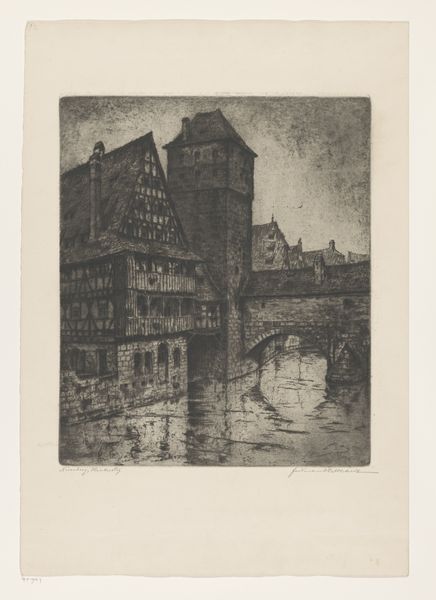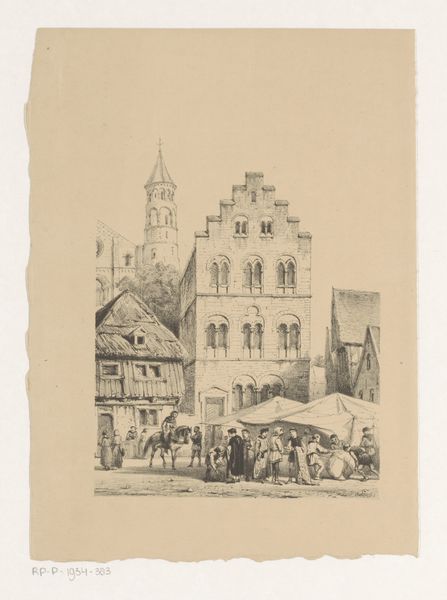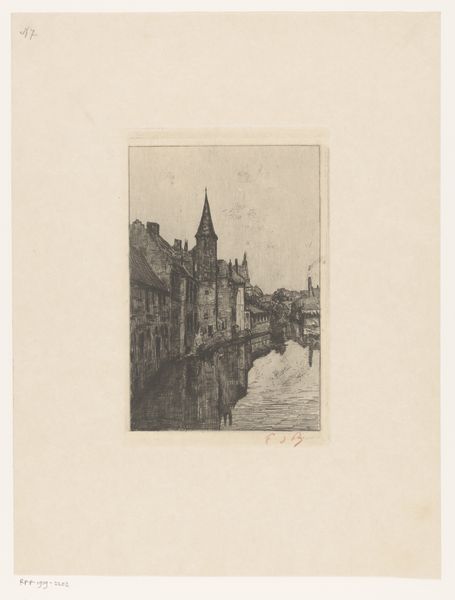
print, etching
#
dutch-golden-age
# print
#
etching
#
landscape
#
etching
#
geometric
#
cityscape
#
realism
Dimensions: height 132 mm, width 980 mm
Copyright: Rijks Museum: Open Domain
Curator: Let's examine Wijnand Otto Jan Nieuwenkamp's etching, "Damrak in Amsterdam," created sometime between 1884 and 1950. Editor: It's striking how the tight lines, reminiscent of architectural drawings, feel both precise and slightly dreamlike, the neutral tones seem to reflect an industrial mood. Curator: Absolutely, and note the interplay between the geometric rigidity of the buildings and the implied fluidity of the water. This contrast generates visual interest and invites closer inspection of compositional choices. Editor: Thinking about Nieuwenkamp's process, consider the acid, the metal plate, and the skill required to translate the three-dimensional scene into this two-dimensional, repeatable image. Each pull from the plate becomes an index of that labor and materials. Curator: The use of etching really accentuates the depth in the cityscape, drawing our eye upwards toward the architecture and steeple that dominates the frame and subsequently the collective psyche. This becomes representative of the social order. Editor: Agreed, the towering steeple punctuates the composition, its presence serving as a point of reference. And seeing the boats loaded with goods along the Damrak waterway – how does that reflect Amsterdam's trading legacy during this period? You get a sense of industriousness from these repetitive forms in this composition. Curator: Precisely, and it goes even further into representation; the layering of horizontal lines provides a textural experience as your eye transitions upwards into these planes. Editor: I find myself dwelling on the idea of multiples – how each impression made it more broadly accessible. A subtle democratization of art and urban imagery, really highlighting the access to artistic engagement in society. Curator: Yes, this cityscape reveals structural considerations that contribute to its deeper meaning, it certainly has something to offer in our deeper understanding of the artist’s perception of his spatial surroundings. Editor: The etcher's hand shaping our perspective, the engraver influencing a wider, more accessible consumption of his images, and the means by which artistic vision and societal context intertwine within those lines and their repetitive qualities... Intriguing.
Comments
No comments
Be the first to comment and join the conversation on the ultimate creative platform.
